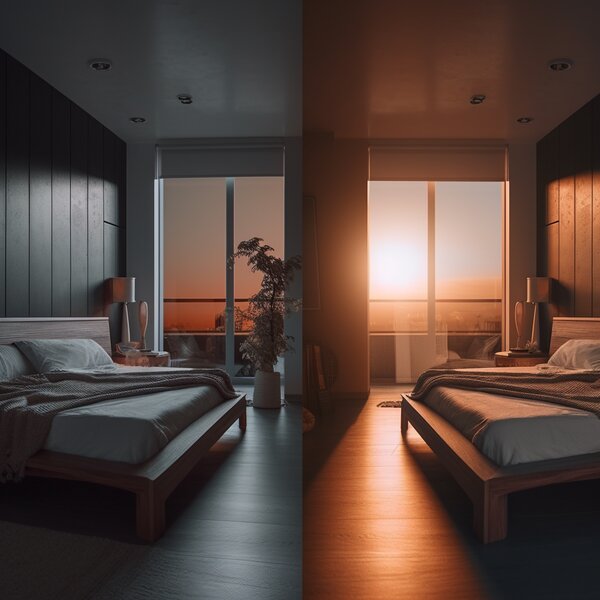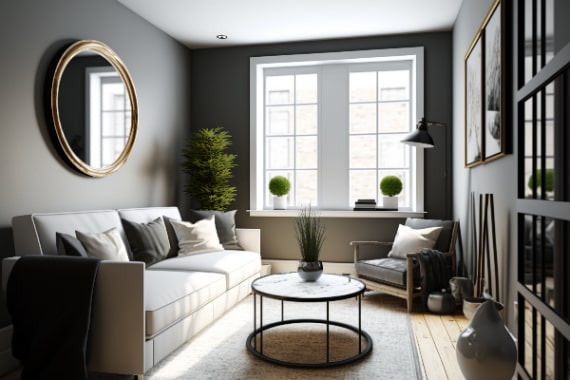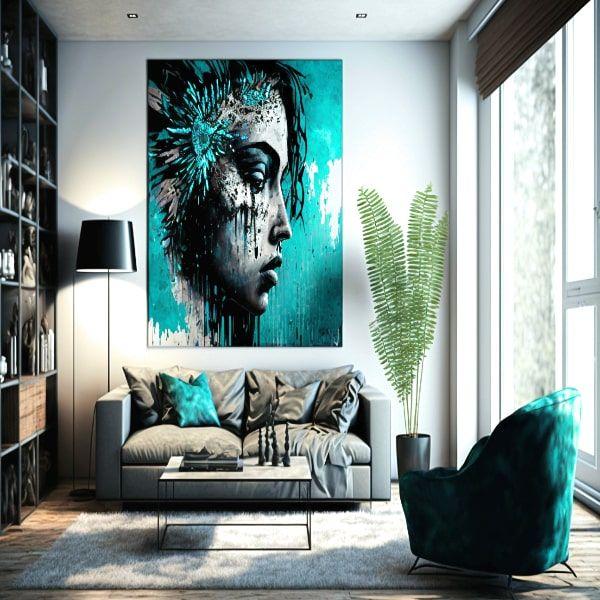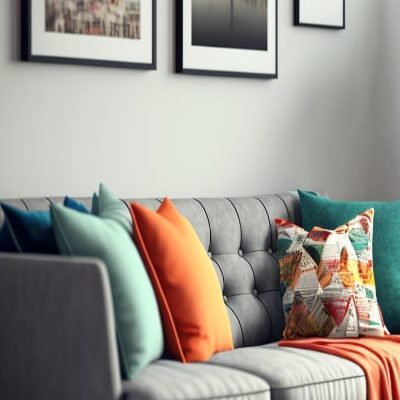The Impact of Lighting on Color in Home Decor
Creating the perfect ambiance in your home involves more than just choosing the right color palette. Lighting plays a crucial role in how colors are perceived and can significantly impact the overall atmosphere of your living space. In this quick read, we’ll explore the relationship between lighting and color, and share some tips on how to create a harmonious balance between the two.
Natural Light vs. Artificial Light
Natural light has a significant impact on how colors appear in your home. During the day, sunlight can make colors appear brighter and more vibrant. However, as the sun sets, colors can lose some of their intensity and take on a different hue. Artificial light sources, such as incandescent, fluorescent, or LED bulbs, can also affect the appearance of colors. Each type of light source has its own color temperature, which can cause colors to appear warmer or cooler.

Tips for Balancing Lighting and Color in Your Home
- Consider the light source: Before choosing a color for your walls, furniture, or accessories, think about the primary light sources in the room. If the room receives plenty of natural light, you may want to opt for cooler colors to balance the warmth of the sunlight. On the other hand, if the room relies mostly on artificial lighting, you might consider warmer colors to create a cozy atmosphere.
- Use multiple light sources: Incorporate various types of light sources (e.g., ambient, task, and accent lighting) to create a balanced and versatile lighting scheme. This will allow you to adjust the lighting to suit different moods and activities.
- Test colors in different lighting: Before committing to a specific color, test paint swatches or fabric samples in the room where they’ll be used. Observe how the colors appear in both natural and artificial light, and at different times of the day.
- Choose the right light bulbs: Select light bulbs with a color temperature that complements your chosen color palette. For example, if your color scheme is primarily cool-toned, you might opt for bulbs with a cooler color temperature (e.g., daylight or cool white bulbs).
- Layer your lighting: Layering your lighting allows you to control the ambiance and mood of a space. By combining ambient, task, and accent lighting, you can create a dynamic and flexible lighting scheme that enhances your home’s color palette.
By understanding the relationship between lighting and color, you can create a harmonious and visually appealing living space. Be sure to check out our other quick reads, like Choosing the Right Color Palette for Your Home and Color Psychology in Home Decor, for more tips and inspiration.



